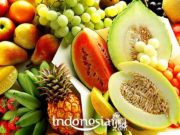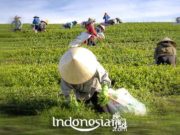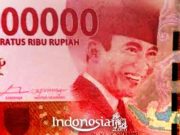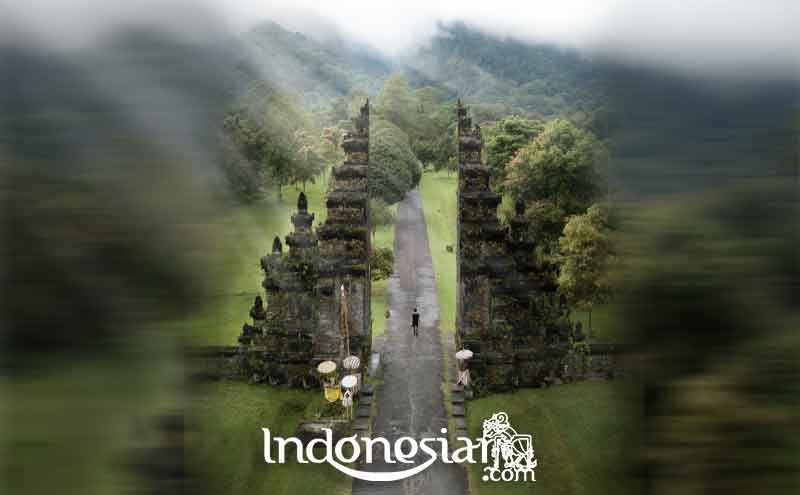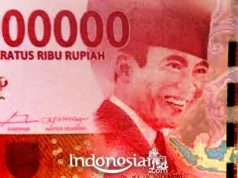The island of Bali is an area in Indonesia which is very famous for its beautiful beaches and a rich variety of cultural arts. Bali is also famous for its natural mountain tourism and views of enchanting green terraced rice fields known as terraced rice fields.
Terracing is a method in agricultural management designed to deal with land in extreme contoured areas such as highlands and mountain slopes. By making terraces, water from a height is expected to flow with a controlled speed and volume.
There are several areas on the Island of the Gods that are famous for their terraced rice fields, such as in Tegalalang Village and Blimbing Village, Pupuan, which are in the famous tourist center, Ubud, in Gianyar Regency. Another one is in Jatiluwih Village, Penebel District, Tabanan Regency. Tegalalang, Pupuan, and Jatiluwih have cool air because they are located in a mountainous area and run subak, which is an indigenous community organization that regulates traditional irrigation systems and has been running since the 11th century.
This subak system represents Balinese culture based on agriculture, in particular, wetland agriculture, namely rice. In Subak, the culture of mutual cooperation, environmental preservation, knowledge of seasons, winds and pest control is reflected.
Subak is governed by a traditional leader called pekaseh and usually works as a farmer. Subak is one of the manifestations of Tri Hita Karana, which is the Balinese Hindu philosophy in maintaining the balance between humans and each other, humans and nature, and humans and the Creator.
Because of this, the United Nations Educational, Scientific and Cultural Organization, UNESCO, at its meeting in Saint Petersburg, Russia, 20 June 2012, has designated subak as a world cultural heritage.
Even though they run a similar irrigation system, there is a difference between the terraced rice fields of Tegalalang, Pupuan, and Jatiluwih. According to the author of the book “Subak: Traditional Irrigation Systems in Bali”, I Gde Pitana, there are several important elements that distinguish it.
Jatiluwih rice fields still run subak with the original pattern, namely without any concrete buildings in the irrigation flow. Then, red bali rice is a local variety that is still being maintained for planting in the Jatiluwih rice fields.
Local farmers also still maintain the aesthetics of planting rice on terraced fields in order to produce beautiful green views of the subak system of rice fields.
Finally, since 1993 the subak rice fields in Jatiluwih have been designated as a tourist destination village. Subak in Jatiluwih is also included by UNESCO as part of the Balinese cultural landscape which is influenced by subak as a world cultural heritage.
Jatiluwih itself is at an altitude of 700 meters above sea level (masl) and is located at the foot of Mount Batukaru, the second highest mountain on the Island of the Gods.
It takes 1.5 hours from downtown Denpasar to reach Jatiluwih with a distance of about 50 kilometers (km). Data from the Tabanan Regency Agriculture Office noted that the area of terraced rice fields in Jatiluwih reached more than 50,000 hectares (ha) or the largest in all of Bali.
Like most areas in Bali, Jatiluwih also has several historical stories and myths that are still believed today among the local community.
Head of Jatiluwih Tourist Attraction (DTW) I Nengah Sutirtayasa said, from past folk tales, Jatiluwih is believed to have originated from the word jaton which means real and fluid charm which means good or good, so it can be interpreted that Jatiluwih is a village that has a good charm. and real.
Another myth says that Jatiluwih was once the burial area of Jatayu, a demigod creature in the form of an eagle. Since ancient times, Jatiluwih has been visited by immigrants with various backgrounds, both from the Brahmin, Ksatria, Wesia, and Sudra circles.
They not only visited Jatiluwih but also built several temples such as Luhur Petali Temple, Luhur Bhujangga Waisnawa Temple, Resi Temple, and Taksu Agung Temple.
Obama Has Visited
Jatiluwih rice fields have provided its own sensation for tourists, especially foreign tourists. They don’t just take pictures and enjoy the view of the terraced rice fields like green rugs set in virgin forest along the ridge of Mount Batukaru.
Especially if the photo session is carried out before sunset when the orange hue colors the evening sky of Jatiluwih. Tourists can also feel the sensation of going down to the rice fields to experience farming activities such as hoeing, cleaning fields or nampadins, plowing the fields (ngelampit), leveling rice fields (mlasah), planting rice (nandur), and harvesting (sasih sada).
Sutirtayasa together with the local community also built a cement road with a width of one meter along the 3 km around the rice fields and can be used by tourists as trekking and hiking trails while enjoying the beauty of the Jatiluwih rice fields.
If you don’t want trekking or hiking, tourists can ride bicycles instead by renting them from local residents. Not far from terraced rice fields, Jatiluwih also has another beautiful asset in the form of Yeh Ho waterfall.
Former United States President Barack Obama and his family also took the time to travel to Jatiluwih while visiting Indonesia in June 2017.
The best time to enjoy all the natural treats is at 8 am to 5 pm local time. We can also visit Jatiluwih from February to April when the rice stalks start to grow and the expanse starts to turn yellowish green and June-July when the harvest time arrives.
There is a fee of Rp. 15,000 for domestic tourists and Rp. 40,000 for foreign tourists to enter the tourist village of Jatiwulih. Every year the local community holds the Jatiluwih Festival to increase the number of tourist visits.
In 2018 the number of foreign tourists traveling and staying the night in Jatiluwih reached 200,000 and increased 30 percent a year later. It’s just that during the eight months of the Covid-19 pandemic, the number of foreign tourist arrivals has drastically decreased.
However, domestic tourist visits have actually increased in recent months. Data from the Jatiluwih DTW stated that every day there are around 1,000 domestic tourists visiting Jatiluwih and this increases to 1,500 on weekends.
Are you interested in this article? Come on, get interesting information and add to your insight from indonesiar.com and visit Indonesia as your reference tourist destination.




